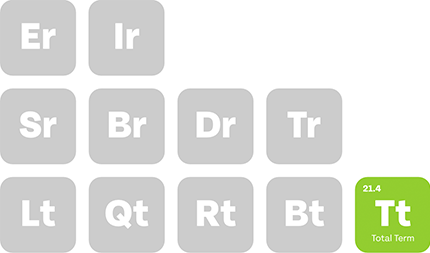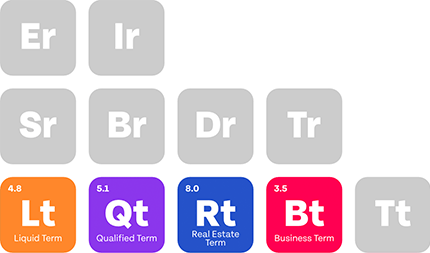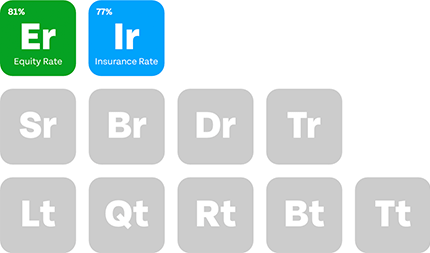Neurology isn’t among the easiest specializations to enter. However, for a specialty that requires years of dedication and hard work, many physicians naturally wonder — what is the average neurologist salary?
The surprise is that despite being a reasonably good annual, many neurologists still wonder how the average neurologist salary compares to the effort, training, and responsibility their role demands.
This article uses backed-up information to provide a closer look at neurologist salary in the United States and the factors that may fluctuate it.
Key Takeaways
- The average neurologist salary is between $343,000 and $347,715 per year, depending on experience, state, and practice type.
- Salaries range from about $297,000 for the middle tier to up to $455,000 for top earners.
- States like New York and Pennsylvania offer higher salaries, while places like Oklahoma and Arkansas are on the lower end.
- Many neurologists receive incentives and bonuses averaging around $29,000 a year, and signing bonuses can average almost $28,000.
- Neurologists often have significant student loan debt but may have options for loan forgiveness ranging from $10,000 to $400,000.
Don’t sign a contract without having a legal professional review it first. Learn how our contract review services can help you protect your income.
Average Neurologist Salary
According to Medscape’s 2024 Compensation Report, the average neurologist salary in the United States is $343,000.
ZipRecruiter’s data comes close to $347,715 of annual income, providing another perspective for those wondering how much do neurologists make across the U.S.
Yet nearly half of the neurologists consider this a fair compensation amount.
The middle tier of neurologists brings home about $297,000, while the high-earning neurology physicians can make an annual salary of up to $455,000.
Here’s a table demonstrating the highest average annual salary in the United States by state:
| State | Annual Salary |
| New York | $413,043 |
| Pennsylvania | $378,217 |
| New Hampshire | $369,842 |
| New Jersey | $364,235 |
| Wyoming | $360,302 |
| Washington | $359,812 |
| Wisconsin | $357,234 |
| Massachusetts | $357,224 |
Comparably, here are the States with the lowest annual average:
| State | Annual Salary |
| Oklahoma | $297,319 |
| Texas | $295,397 |
| North Carolina | $294,158 |
| West Virginia | $292,103 |
| Kentucky | $283,260 |
| Michigan | $282,603 |
| Florida | $277,076 |
| Arkansas | $268,826 |
Factors That Affect Neurologist Salary
When discussing neurologist salary, it’s important to understand that several factors can affect total compensation. A neurologist looking to earn more than the national average can use these factors to their advantage.
1. Years of Experience
Medscape’s 2020 report states that neurologist residents earn $64,600 in their first year of training, with an increase in pay expected each year. According to 2023’s report, that number saw a slight increase to $67,400.
After completing their training, a neurologist salary increases with experience, but then depends on the type of healthcare practice they work in.
An entry-level neurologist earns about $250,000. When a neurologist reaches mid-level experience, their salary is boosted by $10,000. Additionally, with over 10 years of experience gained, a neurologist can earn over $300,000.
2. Location
When deciding where to practice, many physicians wonder how much neurologists earn in different states, since cost of living and pay vary widely by location.
According to ZipRecruiter, the top-paying states for neurologist jobs are New York, Pennsylvania, New Hampshire, New Jersey, Wyoming, Washington, and Wisconsin. On the other hand, Illinois, Texas, Missouri, and North Carolina offer the lowest average annual neurologist salary.
Keep reading…How Much Do Neurologists Make in the U.S. vs Other Parts of the World
3. Type of Practice
Another consideration when examinimg neurologist salary is the type of healthcare facility in which a physician practices. This will significantly affect the compensation they can expect to receive.
The Rosman Search, Inc. did an excellent job of explaining in detail the varying practices and how well they compensate their neurologist.
Here is a breakdown of their findings:
- Hospitals: Have the most significant demand for neurologists, which gives candidates easier placement in a desired position. However, the amount they can offer one candidate is capped by law at the fair market value.
- Private Practice: Much of the potential compensation comes from smart business methods and the ability to supplement their income with their free time.
- Outpatient Clinic: They can pay a neurologist salary similar to that of the hospital; however, they mostly won’t be able to afford to pay quite as much.
- Academic: As in most medical specialties, academic positions in neurology offer the lowest salary. They typically pay around $200,000 in annual wages.
- Locum Tenens: Although Locum Tenens may not be for everyone since a lot of relocating is involved during the service, this very fact makes it one of the highest possibilities of compensation for physicians of all kinds, including neurologists.
Learn more about the opportunities presented with locum tenens jobs by reading this article.
4. Incentives and Bonuses
When looking beyond base pay to see how much do neurologists make in total, Medscape’s 2022 compensation report, shows that more than half receive annual incentives averaging $29,000. That is a significant fraction of their total neurologist salary. The total compensation increased by 10% in 2023 and another 4% in 2024.
Neurologists can also earn production bonuses. These differ depending on the type of incentive programs their healthcare system uses for its employees.
These include bonuses based on RVUs, net collections, gross billing, quality, and patient encounters. The most common type of bonus a physician will encounter includes RVU’s and those that are quality based.
Signing bonuses can be an added bonus for those entering a new physician employment contract with an average of almost $28,000 on the table up front.
See also: What Physicians Need to Know About CPT Codes
Subspecialties for Neurology
To fully understand a neurologist salary, it’s helpful to look at subspecialties, since pay can vary significantly depending on demand and focus area.
Benchmarking data for subspecialties can be difficult to find, and you may need to discuss the going rate with recruiters or peers in the health system before you look for a new position.
Rosman Search, Inc. has compiled data on a few neurology subspecialties.
Interventional Neurology
Interventional neurologists are among the highest-paying neurology jobs. They can earn $350,000 or more, making this subspecialty a financially worthwhile path to consider.
Neurocritical Care
Another high-paying neurology subspecialty is neurocritical care.
Also earning $350,000 or more, this job description includes the intense treatment of critical illnesses of the nervous system and infections of the spinal cord, as well as serious brain injuries.
Neurohospitalists
When considering how much do neurologists make by care setting, neurohospitalists’ salaries may change depending on the patients. Those who treat inpatient cases can earn a higher base salary but generally receive a lower productivity bonus totaling about $300,000 per year.
Neurohospitalists who treat outpatients can earn this salary in less popular locations that need the extra income to attract candidates.
Vascular Neurologists
A vascular neurologist has expertise in the diagnosis, treatment, and care of cerebrovascular conditions, which encompass disorders impacting the blood vessels within the brain and spinal cord.
The term “stroke doctor” is often attributed to their primary focus on the most prevalent cerebrovascular ailment, stroke.
Pediatric Neurology
The job description of this neurological subspecialty is a no-brainer. However, the pay is not as fulfilling. This job title earns the lowest average neurologist salary.
These physicians encounter many children who have epilepsy and other neurological disorders.
Other Factors Neurologists Should Consider

Wages aside, there are other aspects that should be considered in your financial planning:
Repaying Your Student Loan Debt
When planning repayment, many physicians first ask how much do neurologists make after taxes and required contributions.
Like most other physicians, neurologists spend a significant number of years in school and rack up a large amount of student loan debt. Managing this debt can significantly improve the financial situation of neurologists.
Each physician has several options that may fit their personal situation. To learn more about these options, read our full breakdown of medical student loans.
Don’t forget the possibility of having your employer take some of that burden off of you as well. When negotiating your contract, ask for student loan forgiveness.
According to the Review of Physician and Advanced Practitioner Recruiting Incentives, in point 24, physicians can receive anywhere from $10,000 to $400,000 in student loan forgiveness.
Considering that this debt can be a significant burden for neurologists and other physicians alike, it is worth trying for student loan forgiveness.
Related: A Physician’s Guide to Student Loan Forgiveness
Negotiating Your Neurologist Salary
No matter your worth and the fair market value, if you don’t know the average neurologist salary and negotiate for what you believe yourself to be worth, you won’t get it. That is why a physician must hold their own in contract negotiations.
A neurologist needs to be aware of what items should be addressed correctly and concisely in the employment contract so that nothing is left to chance and taken advantage of later.
Consider this short list of topics to include before proceeding:
- Compensation and benefits
- Duties and responsibilities
- Partnership and ownership agreements
- Begin and end date
- Restrictive covenants
- Termination details
- Insurance requirements
Here is a more thorough checklist for you to learn before entering negotiations or to check off as you read through a proposed contract.
Tips for Negotiation
While it’s vital to be professional and respectful when entering negotiations, you should never be complacent.
You should be confident about your worth and ask as many questions as you need to complete the negotiation. It would also be best if you came ready with those questions. We need to have as few back-and-forths with paperwork as possible.
Be prepared to make concessions for the employer to let them know that you aren’t challenging to deal with and justify your requests. A positive attitude cannot be understated. While a demanding attitude could kill your chances.
A physician should be careful before signing any paperwork. This includes a contract that could significantly affect the next decade or so of their financial health by having a contract review in any of these situations:
- Entering or renewing a contract
- Changing compensation packages
- Renegotiating contract
- Exiting a contract
- Transitioning from employee to partnership
Our team of compensation specialists can ensure your contract is fair and mutually beneficial for a long and happy professional relationship between your employer and yourself.
Disability Insurance to Protect Your Neurologist Salary
Acquiring wealth, paying off debts, and protecting income is crucial to providing lifelong financial stability for you and your family.
If you’re weighing risk versus reward, understanding your neurologist salary compared to a potential loss of income clarifies the value of coverage.
Investing in disability insurance is the best way to ensure that tragedy won’t leave you in a financial crisis. There are many different carriers and policies to consider.
You undoubtedly have concerns and questions. This article has already addressed many of the common questions we’ve been asked. Feel free to take a look, and always reach out to our ready-to-respond team with any questions.
Similar:Disability Insurance Guide and How to Submit a Disability Claim for Physicians
Building Retirement
Over a long career, your neurologist salary make can change significantly, with average annual compensation starting to decline after about twenty years in practice. For this reason, you should be planning for retirement before you reach this milestone.
If you work at a hospital, clinic, or academic facility, you should have already enrolled in a 401k. In addition, if the company or facility you work for is not-for-profit, you would enroll in a 403B.
If you are in private practice, you can still enroll in a 401k plan through your business and other options determined by the owners collectively.
Both employed and self-employed neurologists can benefit from a Roth IRA as an additional retirement fund.
Effective Tax Planning
One should be aware that while neurologist salary varies, and how much neurologists make can shift over time, effective tax planning can save thousands of dollars each year in taxes owed to the government.
A professional can help you check for tax deductions and credits and find opportunities to save even more money before tax season arrives.
Are you interested in the salaries of common physician specialties?
The FMV of Radiation Oncologists | How to Make the Most of a Dermatologist’s Salary | How to Make the Most of a Pathology Salary | Our Salary and Compensation library.
Final Thoughts
As a neurologist, you have adequate job security. However, you should ensure that you get just compensation. Understanding the average neurologist salary and the factors that influence it can help you gain valuable leverage, but it can be hard to track all of these on your own.
Our team of compensation specialists can help relieve some of your stress and set you up for financial security, whether you’re just starting your career or trying to better understand how much do neurologists make at different stages. Contact us today. It only takes a few seconds.
Subscribe to our email newsletter for expert tips about finances, insurance, employment contracts, and more!








































